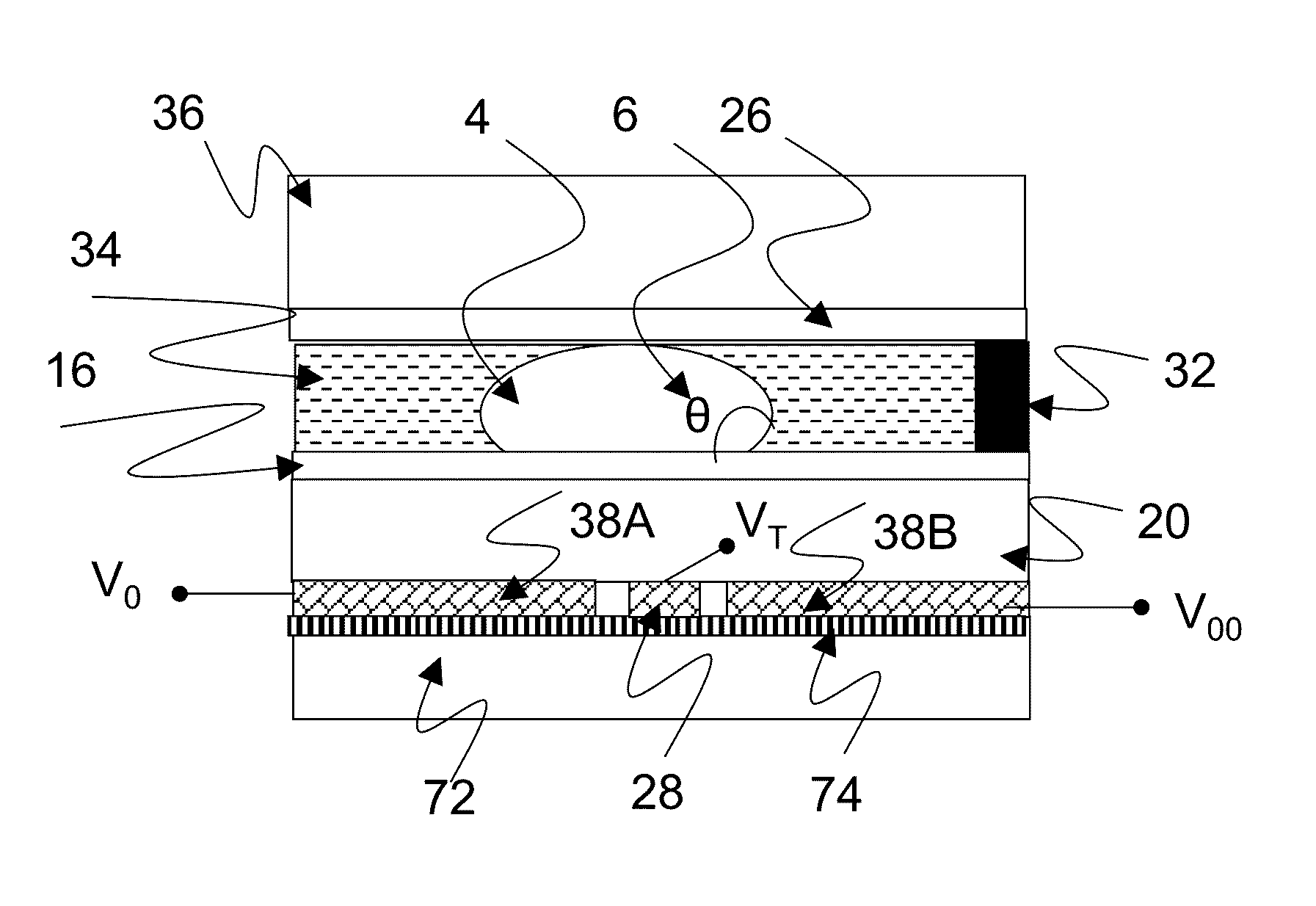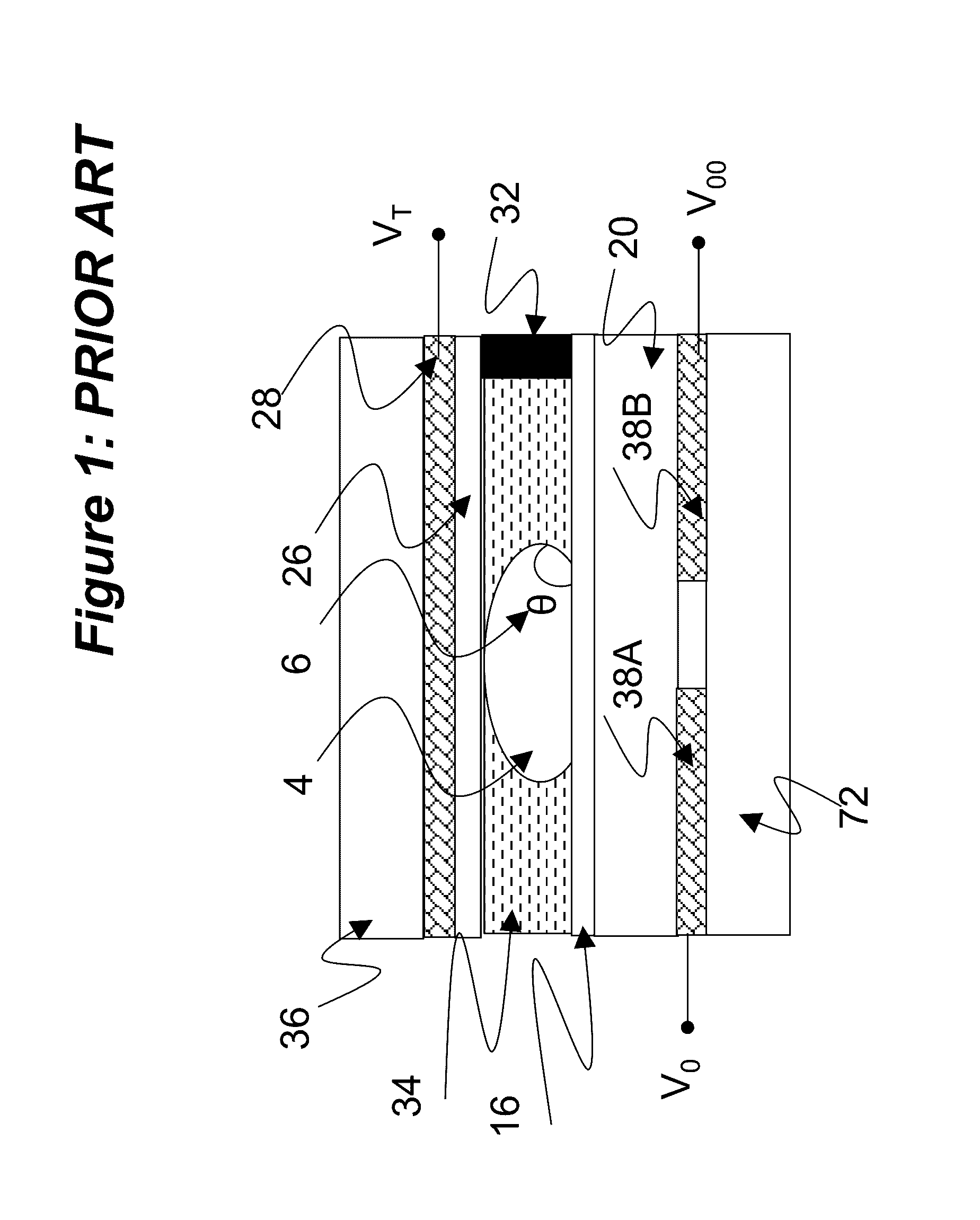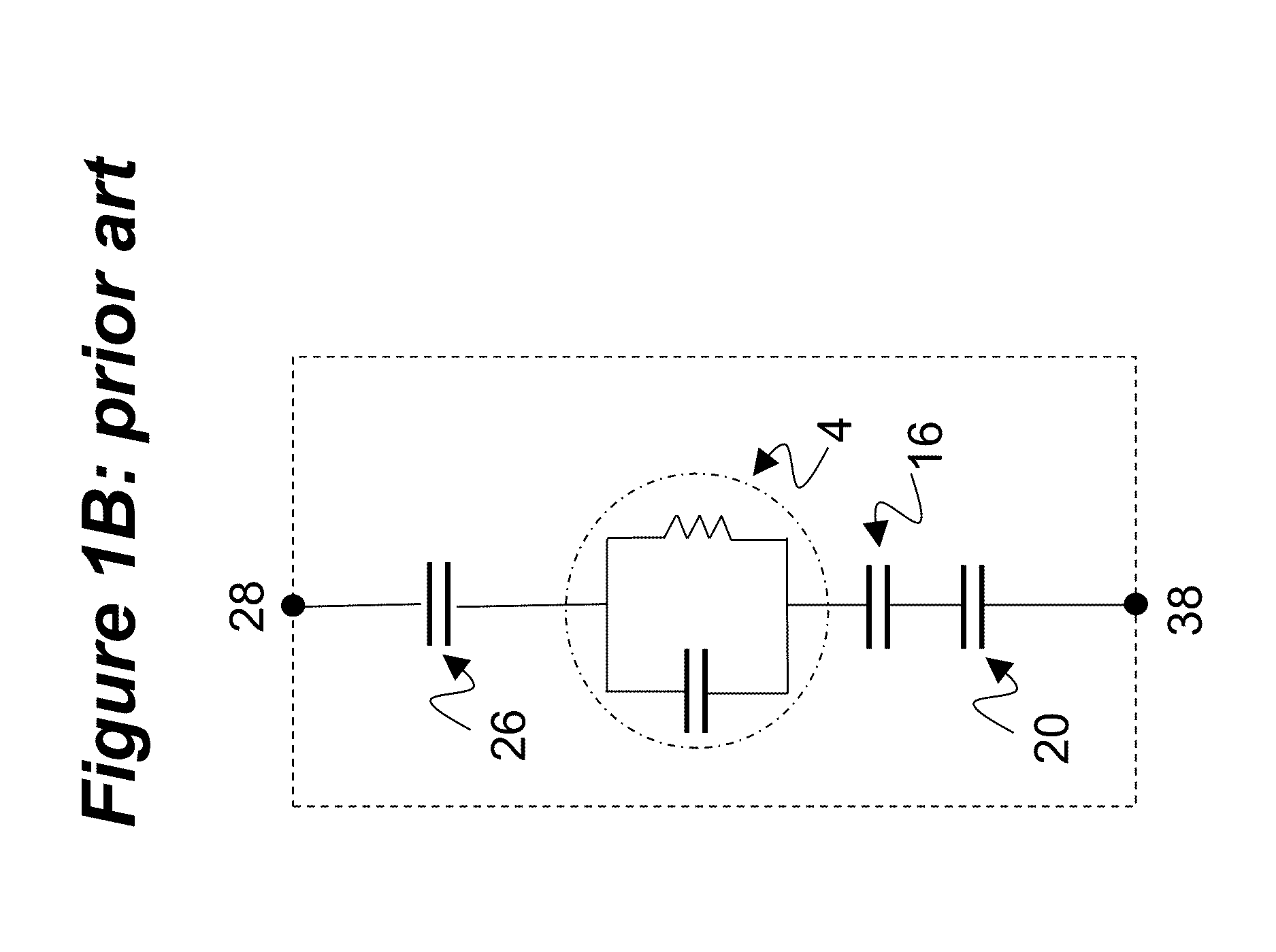EWOD device with calibrated serial dilution function
a serial dilution function and dilution device technology, applied in the field of digital microfluidics, can solve the problem of not disclosing circuit embodiments, and achieve the effect of facilitating an accurate digital-pcr reaction
- Summary
- Abstract
- Description
- Claims
- Application Information
AI Technical Summary
Benefits of technology
Problems solved by technology
Method used
Image
Examples
first embodiment
[0096]According to this embodiment, the AM-EWOD device of the invention is configured to perform the step of diluting a “parent” droplet with a “diluent” droplet. The parent droplet may be comprised of any liquid, for example, sample, reagent or a reaction product from a previous reaction step. The parent droplet comprises a concentration of one or more species to be diluted. This species may comprise, for example, a quantity of chemical species, a solute, a molecule or bio-molecule, a particle or a cell.
[0097]The diluent droplet may be comprised of any liquid, for example, water or a buffer solution. Optionally, and preferably, the parent and diluent droplets may also contain a quantity of surfactant to aid manipulation of the droplets by electro-wetting.
[0098]In general, therefore, an aspect of the invention is a method of performing dilution of a droplet in an electro-wetting on dielectric (EWOD) device. In exemplary embodiments, the dilution method includes the steps of: providi...
third embodiment
[0126]the invention is similar to previous embodiments, whereby the individual droplet manipulations are configured to occur in such a way so that the species containing parent droplet remains stationary in one position on the array and the other participating droplets are merged into, or split out from, this position. In exemplary embodiments, the dilution method may include the steps of maintaining the parent droplet at one position on the electrode array; merging the diluent droplet into the parent droplet at the one position to form the product droplet; and splitting the daughter droplet from the product droplet at the one position to another different position on the electrode array.
[0127]An example implementation is shown in FIG. 9 where the arrows represent the movement of liquid. At time 1, the diluent droplet 40 is moved to the location of the parent droplet 4B, and at time 2 the droplets are mixed to create droplet 4D. At time 3, droplet 4D is split into components 4D1 and...
fourth embodiment
[0133]the invention is shown in FIG. 10. This embodiment utilizes the methods of any of the previous embodiments to perform a digital assay at a multiplicity of concentrations. In exemplary embodiments, therefore, the dilution method may include the steps of diluting a parent droplet into one or more daughter droplets of different concentrations in accordance with any of above embodiments, splitting the one or more daughter droplets into a plurality of smaller reaction droplets, and performing a digitized reaction with one of the reaction droplets.
[0134]Referring to FIG. 10, accordingly, some or all of the methods of embodiments 1 to 3 are used to prepare assay droplets 4G, 4H and 4I. Droplet 4H is created by the serial dilution of droplet 4G with an appropriate diluent droplet (not shown) such that the dilution ratio is β. Likewise, droplet 4I is created by the serial dilution of droplet 4H with an appropriate droplet of diluent (not shown) and a dilution ratio of β. Typically the ...
PUM
| Property | Measurement | Unit |
|---|---|---|
| actuation voltages | aaaaa | aaaaa |
| concentration | aaaaa | aaaaa |
| volume | aaaaa | aaaaa |
Abstract
Description
Claims
Application Information
 Login to View More
Login to View More - R&D
- Intellectual Property
- Life Sciences
- Materials
- Tech Scout
- Unparalleled Data Quality
- Higher Quality Content
- 60% Fewer Hallucinations
Browse by: Latest US Patents, China's latest patents, Technical Efficacy Thesaurus, Application Domain, Technology Topic, Popular Technical Reports.
© 2025 PatSnap. All rights reserved.Legal|Privacy policy|Modern Slavery Act Transparency Statement|Sitemap|About US| Contact US: help@patsnap.com



